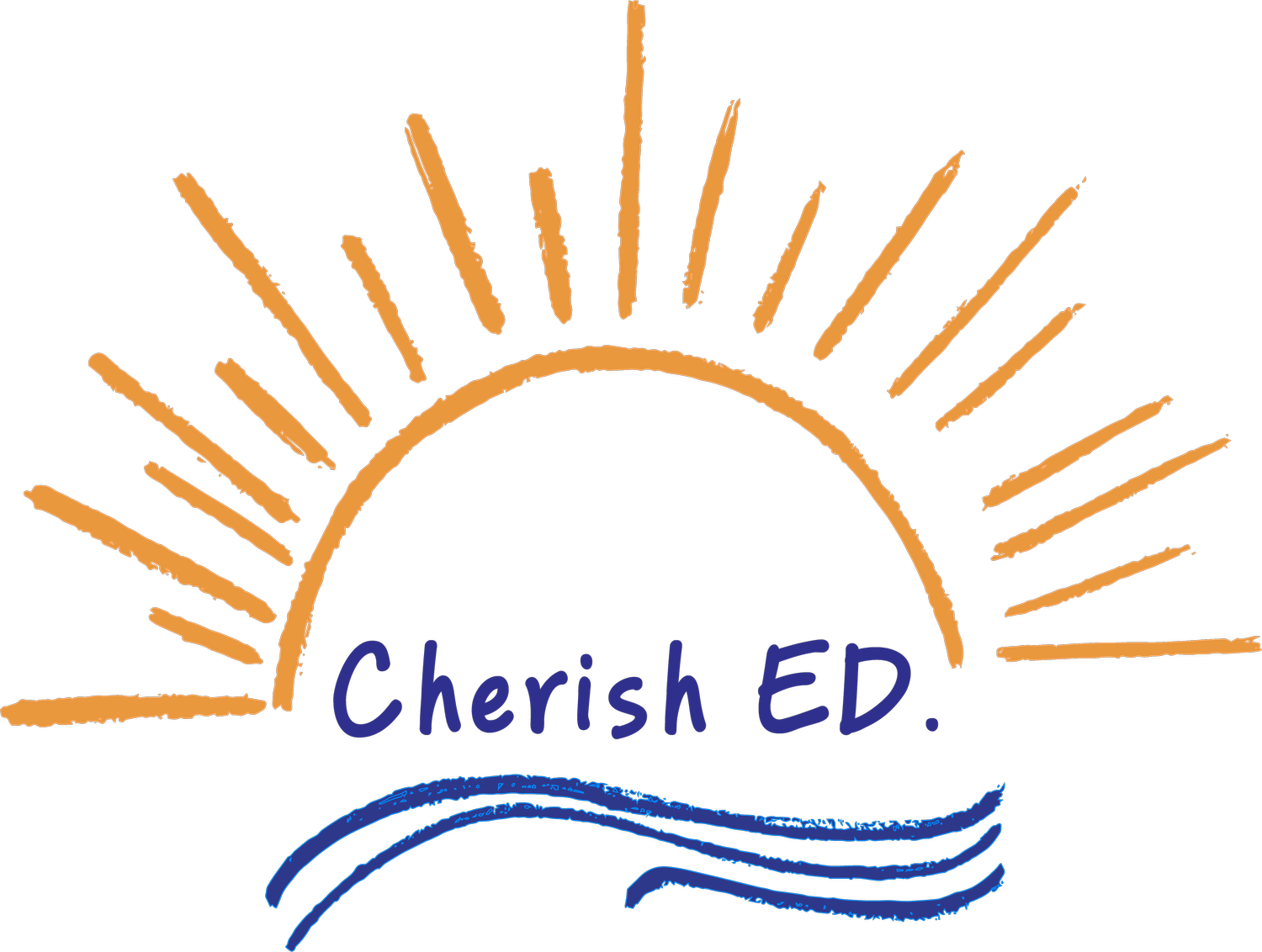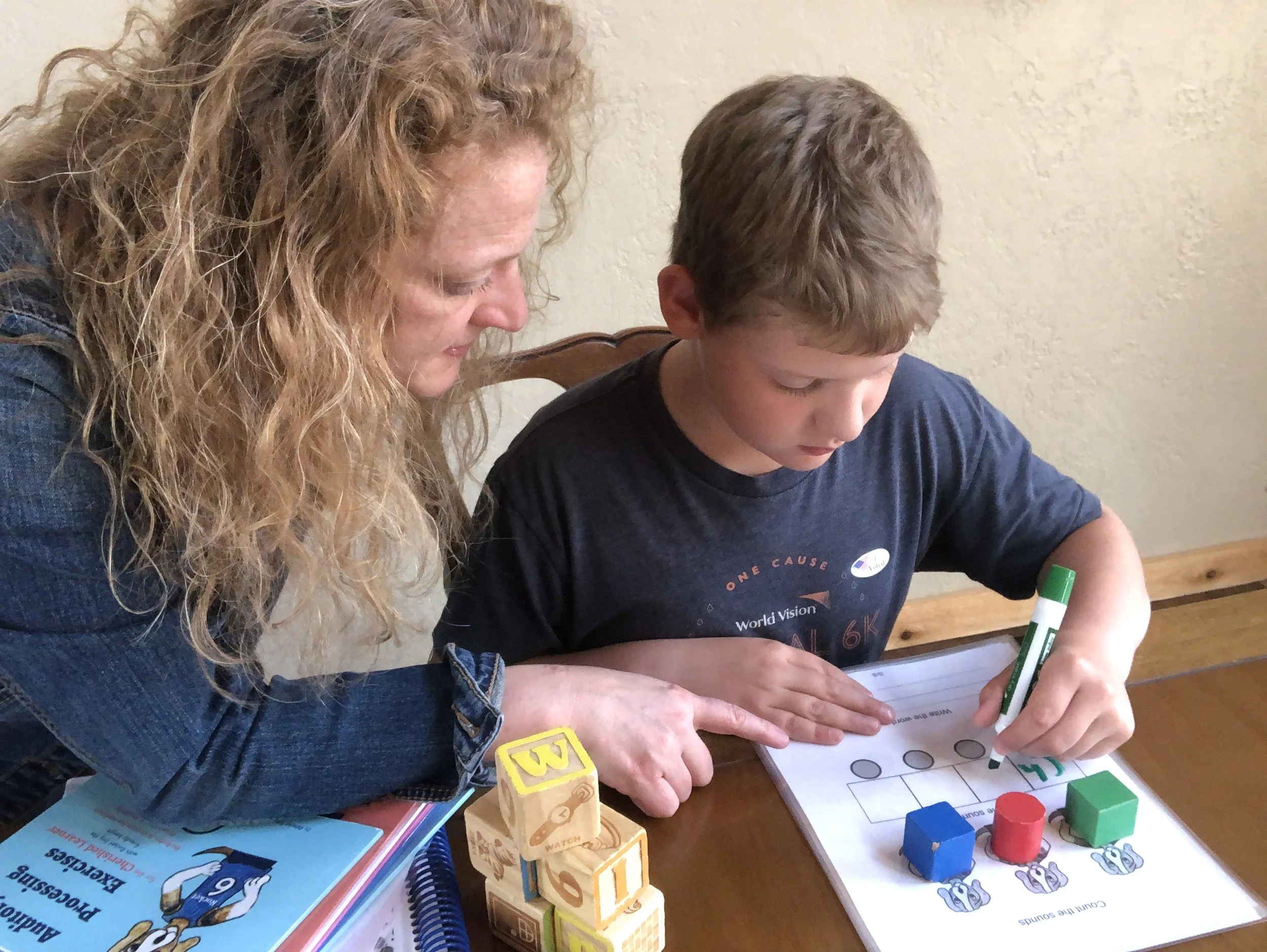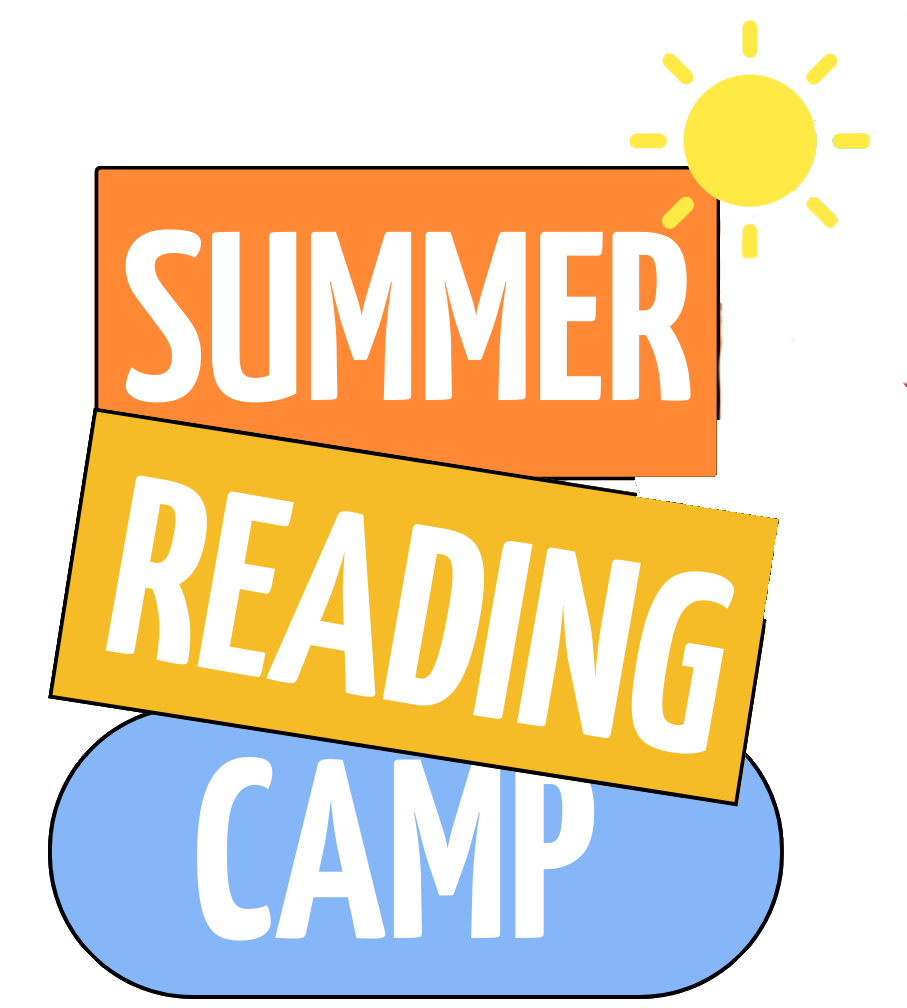Dyslexia Therapy & Academic Language Support Services
Dyslexia Therapy
Our Certified Academic Language Therapists are experts in the field of dyslexia and reading instruction. Students in dyslexia therapy may be seen in small groups or in a one-on-one setting based on need. Dyslexia therapy is an intensive program that is explicit, systematic, and cumulative in its approach and incorporates multisensory instruction into all the components of literacy development.
Academic Language Support
Some students, with or without identified dyslexia, may benefit from structured literacy components in the area of reading, spelling, and writing. This is often a good match for students who are receiving dyslexia services at school, or who may have completed a dyslexia program but would still benefit from support. Our academic therapy sessions are tailored to the needs of our students.
Programs Used
Our Certified Academic Language Therapists (CALT) work as a partner with you, your child, and the school to develop appropriate goals and services. Some students may need intensive dyslexia therapy, while others may need academic language support. Based on the needs and goals of your child, a tailored program will be determined.
Our CALTs are trained in multiple Orton-Gillingham programs endorsed by the International Dyslexia Association (IDA), including:
Take Flight: A Comprehensive Intervention for Students with Dyslexia
Pre-Flight
BUILD: K-1 early reading intervention
Scientific Spelling
Developing Metacognitive Skill
History of the English Language
*All of our sessions are taught by Certified Academic Language Therapists (CALT) or Certified Academic Language Practitioners (CALP).
“My daughter has struggled with reading and writing since she started school. After a short four months with Dr. Spencer, I noticed a definite improvement in pronouncing words and fluency in reading full sentences. Lucy really enjoyed attending the sessions and looked forward to them each time. The program not only improved her reading literacy but her willingness to learn as well. Thank you, Rebecka, for all you have done to help her.”
TAKE FLIGHT: A COMPREHENSIVE INTERVENTION FOR STUDENTS WITH DYSLEXIA
Take Flight: A Comprehensive Intervention for Students with Dyslexia is a two-year Orton-Gillingham based curriculum written by the staff of the Luke Waites Center for Dyslexia and Learning Disorders at Scottish Rite for Children (SRC) in Dallas, Texas. It was built on the successes of three previous dyslexia interventions developed by the staff of SRC: Alphabetic Phonics, Dyslexia Training Program, and TSRH Literacy Program. Take Flight is a curriculum that is evidence-based and backed by research. Click to read the Research Summary.
Take Flight is designed specifically for individuals who have a language-based learning difference (dyslexia), the 10 – 15% of the population who may be unable to remember two-dimensional symbols, letters, or words easily. These individuals require intervention that utilizes special methods and materials.
Take Flight is a comprehensive, ungraded, structured, and sequential curriculum that utilizes multisensory techniques for basic instruction in reading, writing, and spelling. Task analysis was used to organize and sequence the following:
Phonic regularities for reading
Rules for syllable division
Spelling
Other basic linguistic concepts
Take Flight is based on the pioneering research of Dr. Samuel T. Orton, a neuropsychiatrist, and the educational and psychological insights of Anna Gillingham. The Orton-Gillingham techniques for teaching children lacking a talent for language became the basis of a pilot from 1965 – 1975 at the Language Laboratory at Scottish Rite for Children in Dallas, Texas. An interdisciplinary team worked to incorporate multisensory techniques, current findings in learning theories, and discovery teaching into the Take Flight curriculum.
-
Take Flight addresses the five components of effective reading instruction identified by the National Reading Panel’s research and is a comprehensive Tier III intervention for students with dyslexia.
-
Phonemic Awareness – Follows established procedures for explicitly teaching the relationships between speech-sound production and spelling-sound patterns.
Phonics – Provides a systematic approach to single word decoding. Students learn 96 grapheme-phoneme correspondences.
Fluency – Uses research-proven directed practice in the repeated reading of words, phrases, and passages to help students read a newly encountered text more fluently.
Vocabulary – Features multiple word learning strategies (definitional, structural, contextual) and explicit teaching techniques with application in the text. Students learn 87 affixes with an emphasis on English morphology. Students learn Latin roots and Greek combining forms.
Reading Comprehension – Students are explicitly taught how to apply and articulate multiple comprehension strategies for narrative and expository text through cooperative learning, story structure, question generation, and answering, summarization, and comprehension monitoring.
-
Structured literacy is explicit, systematic teaching that focuses on phonological awareness, phonics and decoding, spelling, vocabulary development, comprehension skills, and written expression. Take Flight = Structured Literacy.
Simultaneous and Multisensory – In order to enhance learning and memory, all learning pathways in the brain (visual – auditory – kinesthetic – tactile) are engaged simultaneously.
Systematic and Cumulative – Organization of the material follows the logical order of the English language. Instruction begins with the most simple elements and progresses to the most difficult concepts. Each lesson is built on the previous concept learned and content is regularly reviewed to enhance retention.
Direct Instruction – Multisensory language instruction includes the direct teaching of all concepts. The academic therapist does not assume students have mastered previous language skills.
Diagnostic Teaching– The instructional plan for every student is based on continuous assessment of individual needs with the goal of students reaching a degree of automaticity.
Synthetic and Analytic Instruction – Synthetic instruction presents the parts of the language and how they work together to form a whole. Analytic instruction presents the whole of language and demonstrates how it can be broken down into parts.
-
Take Flight is designed for use by a Certified Academic Language Therapist for individuals with dyslexia ages 7 and older. For individuals younger than 7 years of age, PreFlight can be used for intervention.
-
Certified Academic Language Therapists (CALTs) are not tutors. They are specially trained to work with students with dyslexia and related language-based learning differences. They have completed extensive training in a multisensory structured language program at a training center or university that offers courses accredited by the International Multisensory Structured Language Education Council (IMSLEC). Course content reflects the International Dyslexia Association’s (IDA) Knowledge of Practice Standards for Teachers of Reading and the Academic Language Therapy Association’s eight standards of knowledge and skills in Multisensory Structured Language Education.
-
Hold a master’s degree.
Complete 200 course contact hours in an accredited learning therapy program.
Complete a minimum of 700 clinical teaching hours.
Complete 10 demonstration lessons.
Successfully pass the Academic Language Therapy Association (ALTA) Competency Exam for Multisensory Structured Language Education. Passing the exam qualifies an individual to be a Certified Academic Language Therapist (CALT).
-
United States: Alabama, Arizona, Arkansas, California, Colorado, Florida, Idaho, Illinois, Kansas, Louisiana, Maine, Massachusetts, Mississippi, Missouri, Montana, Ohio, Nebraska, New Hampshire, New Jersey, New Mexico, North Carolina, Ohio, Oklahoma, Oregon, Pennsylvania, Tennessee, Texas, Utah, Washington, Wisconsin
Worldwide: Canada, Macedonia, Saudi Arabia
TO MEET THE NEEDS OF K-1 STUDENTS WHO HAVE BEEN IDENTIFIED AS AT RISK FOR DYSLEXIA
BUILD: A K-1 EARLY READING INTERVENTION
To meet the needs of K-1 students who have been identified as at risk for dyslexia, the staff of the Luke Waites Center for Dyslexia and Learning Disorders at Scottish Rite for Children has developed a 100-lesson reading intervention called BUILD: A K-1 Early Reading Intervention. BUILD is a small group intervention that addresses five specific components of reading instruction. Each component is taught developmentally using a direct, systematic, cumulative, multisensory method of introduction and practice to meet the specific needs of kindergarten and first-grade students struggling with reading.
THE FIVE COMPONENTS OF BUILD:
A K-1 EARLY READING INTERVENTION:
Alphabet: the identification of letters, sequencing skills, and alphabetizing
Letter/sound knowledge: the direct instruction of individual letters and sounds, leading to the practice of reading words and sentences
Phonological awareness: the explicit introduction of the relationships between speech-sound production, from rhyme to spelling
Vocabulary: the direct teaching of strategies using context clues to infer the meaning of unfamiliar words
Comprehension: the explicit teaching of specific learning strategies used to identify the basic components of a story
Are you looking to be more diagnostic and prescriptive in your teaching?… Pre-order your Benchmark Assessments today!
Utilize the Benchmark Assessments as a progress monitoring tool in conjunction with BUILD: A K-1 Early Reading Intervention, specifically designed for early literacy development. By administering these assessments, you’ll gain valuable insights to inform your next steps and tailor instruction for students who require additional support in acquiring foundational literacy skills, whether during or after the intervention. (52 Page Booklet – Includes Benchmark Assessments for Teachers and Students for Books 1 -3.)
Please note that the Benchmark Assessments are not part of the research-based curriculum BUILD: A K-1 Early Reading Intervention developed at Scottish Rite for Children in Dallas, Texas. Under copyright law, the content of the Benchmark Assessments is restricted to use by a single individual who has purchased it.
A Dyslexia Curriculum for Newly Identified Students with Dyslexia
Turbo Start: Summer Camp
A Dyslexia Curriculum for Newly Identified Students with Dyslexia is a nine-week, evidence-based dyslexia intervention that can be used as part of a standard protocol dyslexia instruction program. The Turbo Start program provides a jump start for newly identified students with dyslexia who need comprehensive dyslexia intervention while awaiting placement in an intervention group. Turbo Start addresses five specific evidence-based components of reading intervention. Each component is taught developmentally, using a direct, systematic, cumulative, multisensory method of introduction and practice to meet the specific needs of newly identified students with dyslexia. Turbo Start is a complementary dyslexia instruction program that provides comprehensive, intensive, evidence-based instruction for students who are identified off-cycle and addresses characteristic weaknesses of students with dyslexia to support optimal growth once placed in a sequential reading intervention program.
TURBO START WAS DESIGNED FOR:
Newly identified individuals with dyslexia of all ages
One-on-one or small group instruction (no more than six students)
Use by a trained Take Flight Therapist or a school’s provider of dyslexia instruction
Four days per week for 60 minutes per day or five days per week for 45 minutes per day
THE FIVE COMPONENTS OF TRUBO START:
Turbo Start contains the five components of effective reading instruction identified by research from the National Reading Panel. Turbo Start addresses each component by:
Phonemic Awareness – following established procedures for explicitly teaching the relationships between speechsound production and spelling-sound patterns.
Phonics – providing a systematic approach for single word decoding.
Fluency – using research-proven, directed practice in repeated reading of words, phrases and passages to help individuals read newly encountered text more fluently.
Vocabulary – featuring multiple word learning strategies (definitional, structural, contextual) and explicit teaching techniques with application in text.
Reading Comprehension – teaching individuals to explicitly use and articulate multiple comprehension strategies in narrative and expository text (i.e., cooperative learning, story structure, question generation and answering, summarization, and comprehension monitoring).
TURBO START KEY FEATURES:
The Turbo Start program was developed for use as an off-cycle, drop-in dyslexia program.
The content of Turbo Start is derived from principles of evidence-based dyslexia instruction and provides foundational training in five specific components of reading intervention.
Turbo Start provides flexibility in the intervention timeline to prepare students to enter dyslexia services in a group setting with fidelity
JET: A Fast-Paced Reading Intervention for 14 Years and Older
JET: A Fast-Paced Reading Intervention is a one-year curriculum written by the staff of the Luke Waites Center for Dyslexia and Learning Disorders at Scottish Rite for Children. Jet builds on the success of the four previous dyslexia intervention programs developed by the Scottish Rite for Children staff: Alphabetic Phonics, the Dyslexia Training Program, the Scottish Rite for Children Literacy Program, and Take Flight Elementary.
Jet was designed for:
individuals with dyslexia fourteen years and older
one-on-one or small group instruction (no more than 6 students)
Use by a Certified Academic Language Therapist
Four days a week – sixty minutes per day for one year
or
Five days a week – forty-five minutes per day for one year
Five Components of Effective Reading Instruction
Jet contains the five components of effective reading instruction identified by research from the National Reading Panel. Jet addresses each component by:
Phonemic Awareness – following established procedures for explicitly teaching the relationships between speechsound production and spelling-sound patterns.
Phonics – providing a systematic approach for single-word decoding.
Fluency – using research-proven, directed practice in repeated reading of words, phrases and passages to help individuals read newly encountered text more fluently.
Vocabulary – featuring multiple word learning strategies (definitional, structural, contextual) and explicit teaching techniques with application in text.
Reading Comprehension – teaching individuals to explicitly use and articulate multiple comprehension strategies in narrative and expository text (i.e., cooperative learning, story structure, question generation and answering, summarization, and comprehension monitoring).
Jet is designed around these key findings of Take Flight Elementary that include:
Students who complete Jet instruction show significant growth in all areas of reading skill.
Follow-up research on children who completed treatment indicates that students maintain the benefits of instruction on word reading skills and continue to improve in reading comprehension after one year.
Jet is effective when used in schools by teachers with advanced training in treating learning disorders.
Students with the lowest reading skills acquire the strongest gains from Jet instruction.









